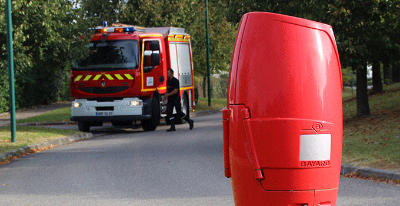TALIS has tapped SIGFOX’s Internet of Things network for real-time fire hydrant monitoring.
Envision this: Your house catches on fire and you dial 911. The fire trucks arrive, the firefighters hop down and immediately throw the hose over their shoulders and rush around the corner to the nearest hydrant. Uh oh, the hydrant isn’t working. The hydrants of today can break, leak and freeze, something which can prove to be costly in a live-or-death situation. Luckily, the Internet of Things is here to help because with the advent of smart cities, comes the rise of much smarter water hydrants.
Most recently, water flow equipment provider Talis announced that they will be tapping into SIGFOX’s rapidly growing IoT network to bring their fire hydrant monitoring technology, called COPERNIC, to connected cities. The solution will enable utility companies and other city officials to track and analyze the status of smart fire hydrants to ensure they are indeed functioning properly and to prevent other issues such as water theft.
The two companies note that COPERNIC allows for real-time monitoring of fire hydrants by time-stamping all data related to hydrant functioning. An electronic module installed on the hydrant sends SMS or email alerts via the SIGFOX network when the hydrant is being opened, closed, tampered with, or malfunctioning. What’s more, all of that data will be made instantly available on a web-based portal, while a mobile app can also access, receive and read alerts.
As previously reported on Bits & Pieces and demonstrated throughout many of our trade show booths, SIGFOX’s cellular, ultra-narrowband (UNB) network has been exclusively designed for small messages that will meet the needs of the vast majority of objects connected to the IoT. The use of UNB is key to providing a scalable, high-capacity network, with very low energy consumption, while maintaining a simple and easy to rollout star-based cell infrastructure. The company’s Atmel based connectivity solution uses license-free frequency bands (runs in the unlicensed 902 MHz band in the U.S. and the 868 MHz band in Europe).
The French IoT startup’s UNB network has been specifically designed for small communications within IoT applications in order to greatly improve the battery life of connected objects. COPERNIC, incidentally, runs on lithium batteries that have an estimated lifetime of 10 years.
“The SIGFOX network, with its ‘plug-and-play’ connectivity, low cost and low power consumption will enable the COPERNIC solution to efficiently deliver a wide range of essential data to water-management officials in real-time,” explained Stuart Lodge, SIGFOX EVP of Global Sales.
This is just one of many bits of news to come out of our friends at SIGFOX in recent weeks. Last month, network operator Narrownet brought SIGFOX to Portugal to enhance the country’s IoT ecosystem for device manufacturers and service providers. Want to learn more? Head here.



Pingback: SIGFOX is bringing the IoT to fire hydrants - Internet of Things | Wearables | Smart Home | M2M
Pingback: SIGFOX trae IoT a las bocas de incendio | ThingsCity
Pingback: Weekly News #26 – Google I/O 2015 recap | French Tech Hub / Prime
Pingback: Italy gets a network exclusively for the Internet of things - OpenSignal Blog - OpenSignal
Pingback: Italy gets a network exclusively for the Internet of things - OpenSignal Blog - OpenSignal
Pingback: › Weekly News #26 – Google I/O 2015 recap